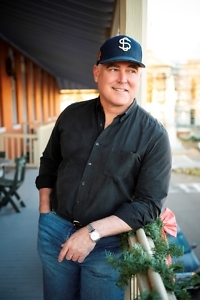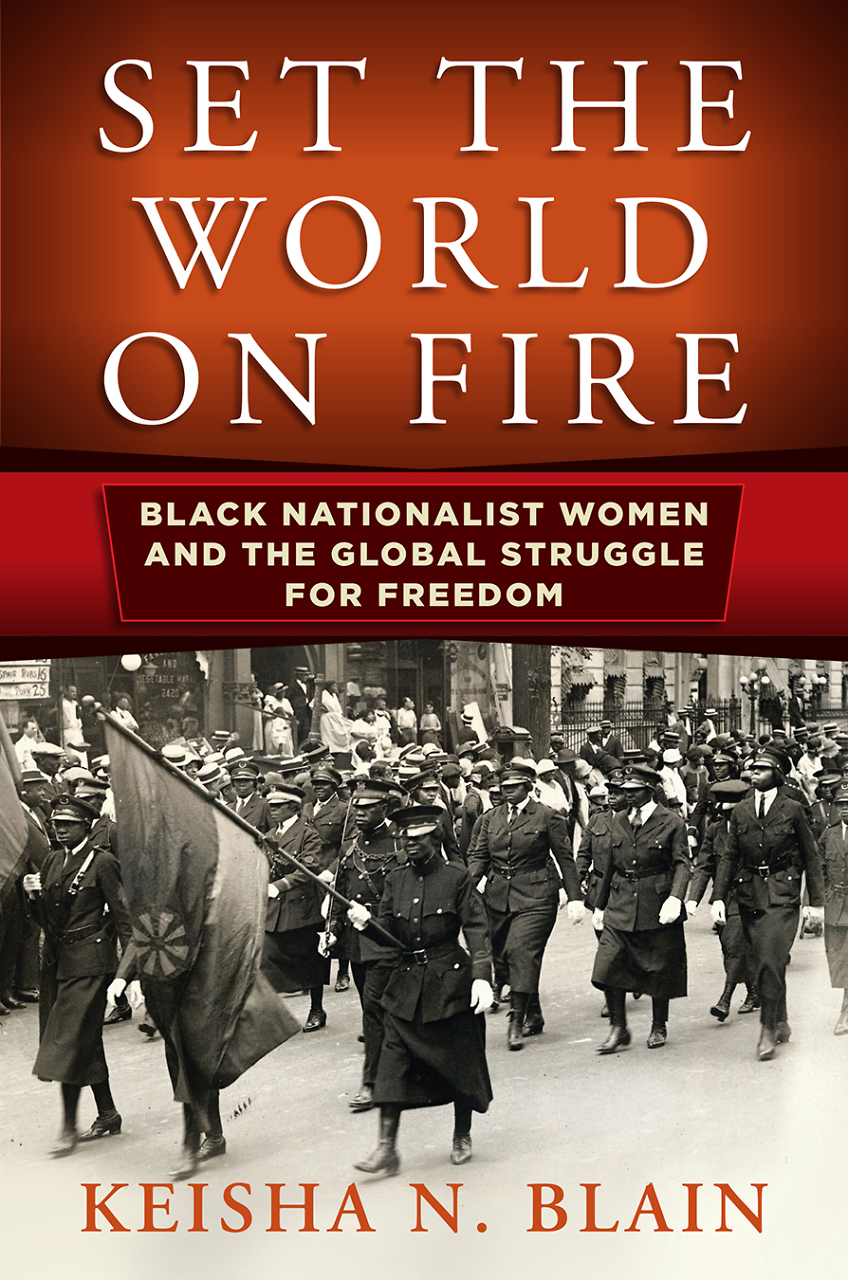Souled Out
Thomas Healy chronicles the creation of a planned Black city in 1970s North Carolina
Every year, the Benjamin L. Hooks Institute for Social Change at the University of Memphis bestows an award for the nonfiction book, published in the previous year, that best furthers understanding of the American civil rights movement and its legacy. The 2021 winner is Thomas Healy’s Soul City: Race, Equality, and the Lost Dream of an American Utopia, a beautifully wrought epic narrative of a failed attempt to start a new Black-oriented town in rural North Carolina during the 1970s.

Healy is a professor at Seton Hall Law School. His previous book, The Great Dissent: How Oliver Wendell Holmes Changed His Mind – and Changed the History of Free Speech in America, won the Robert F. Kennedy Book Award. He has received fellowships from the Guggenheim Foundation, the National Endowment for the Humanities, and the Hutchins Center for African and African American Research at Harvard University. He answered questions via email from Chapter 16:
Chapter 16: Your book’s central character — the driving force behind the creation of Soul City — is a man named Floyd McKissick. Who was McKissick? How did he come to envision Soul City?
Thomas Healy: McKissick was one of the major civil rights leaders of the 1960s, at one point nearly as well known as Martin Luther King Jr. He was the first Black student admitted to the University of North Carolina law school, spoke at the March on Washington, and served as national director of the Congress of Racial Equality, one of the “Big Five” civil rights groups. Combative and outspoken, McKissick moved CORE away from its pacifist roots and helped transform it into a more militant organization. But his chief concern was economic equality.
McKissick believed that Black Americans would never attain political independence until they first achieved economic independence. That’s why he founded Soul City. He wanted to create a place where Black people would control a majority share of power, capital, and opportunity. McKissick didn’t envision an all-Black city, as some of his critics claimed. He welcomed people of all races. But he made clear that his primary goal was to help Black people, especially the poor and unemployed.
Chapter 16: Was Soul City a quest for a kind of utopia? How did it fit into the currents of Black politics in the 1970s, as the civil rights movement was winding down?
 Healy: McKissick’s vision was utopian in this sense: He was trying to create a place that didn’t exist, a place where Black people could pursue the American dream of opportunity, upward mobility, and self-determination. But unlike many utopian projects, Soul City was a practical, hard-nosed endeavor. McKissick and his staff spent most of their time focused on the nitty-gritty aspects of real-estate development: roads, housing, and sewage systems. In that sense, Soul City had more in common with the tradition of Black towns and settlements in this country, a tradition that stretches back to before the Civil War. But Soul City also resonated with the Black Power movement of the late 1960s and early 1970s, which often emphasized self-reliance, political empowerment, and economic development.
Healy: McKissick’s vision was utopian in this sense: He was trying to create a place that didn’t exist, a place where Black people could pursue the American dream of opportunity, upward mobility, and self-determination. But unlike many utopian projects, Soul City was a practical, hard-nosed endeavor. McKissick and his staff spent most of their time focused on the nitty-gritty aspects of real-estate development: roads, housing, and sewage systems. In that sense, Soul City had more in common with the tradition of Black towns and settlements in this country, a tradition that stretches back to before the Civil War. But Soul City also resonated with the Black Power movement of the late 1960s and early 1970s, which often emphasized self-reliance, political empowerment, and economic development.
Chapter 16: McKissick found an unlikely ally in President Richard Nixon. What were the benefits and costs of this alliance? How did the Nixon administration shape the history of Soul City?
Healy: The Nixon administration was indispensable to Soul City. It provided planning grants and ultimately awarded the project a $14 million loan guarantee, but that support didn’t come easily or cheaply. McKissick fought with the Department of Housing and Urban Development for three years to obtain the loan guarantee and ultimately switched political parties to ensure it would happen.
Many people viewed this arrangement as a quid pro quo and accused McKissick of selling out, but the truth is more complex. HUD was close to approving the loan even before McKissick changed parties, and there’s no proof of an explicit deal. Instead, his switch was more in the nature of an insurance policy, a way to ensure that HUD would not withdraw support at the last minute. As it turned out, Nixon was forced to resign only two years after the loan was approved. So whatever benefit McKissick derived from the relationship was short-lived.
Chapter 16: Soul City seemed to grapple with contradictory impulses: It provided a model of Black self-sufficiency, yet needed government support, and it promoted itself as a Black-oriented undertaking, yet welcomed residents of all races. Were these tensions resolvable?
Healy: There was tension between McKissick’s goal of Black self-sufficiency and his dependence on government support, and he was aware of it. But he felt he had no choice. Given the lack of wealth in the Black community at the time and the reluctance of white banks and corporations to invest in a town called Soul City, his only real option was to seek government funding. Ultimately, that tension did prove unresolvable because the government imposed numerous roadblocks that made his path more difficult.
As for whether there was tension between McKissick’s goal of building a Black-oriented town and the goal of integration, I think that was largely in the minds of his critics. As McKissick pointed out, everyone thinks of integration as 80 percent white and 20 percent Black, but there’s no reason it can’t be the other way around.
Chapter 16: Why did Soul City ultimately fail to grow? How did the media portray the undertaking? Did conservative politicians resist it?
Healy: Soul City’s demise was the result of several factors. First, McKissick was trying to build a brand-new city in an economically depressed part of North Carolina, and he was trying to do so during a decade that witnessed two recessions. Second, despite the loan guarantee, the federal government never fully committed to Soul City, and that lack of commitment made it difficult to attract industry and other investors.
But the two biggest factors in Soul City’s demise were the News & Observer of Raleigh and Senator Jesse Helms. The N&O ran a series of sensational and misleading articles that accused McKissick of mismanagement, conflicts of interest, and nepotism. And Jesse Helms, a race-baiting segregationist, seized on those articles to launch a congressional audit of the project. That audit ultimately cleared Soul City of the most serious charges, but the probe stalled development for nearly a year. Even after McKissick was exonerated, Helms and the N&O continued to attack Soul City as an ill-conceived waste of money. Eventually, the pressure became too great, and the federal government pulled the plug on Soul City.
Chapter 16: Can you imagine an alternative history where Soul City flourished? What would that history look like?
Healy: I think Soul City could have flourished if the federal government had fully committed to the project and if the N&O had not launched its crusade against the project. I think it could have served as a model of the kind of Black economic empowerment that McKissick envisioned. Imagine if, right now, in the middle of North Carolina there stood a city of 100,000 residents that had been founded and built primarily by Black people, a city where Black people had a real voice and where all the local institutions — the police department, the schools, the hospitals, the banks, the mortgage companies — had to take their interests seriously.
I’m not naïve enough to think Soul City would have solved all our problems or that it would have eliminated racism, but it might have shown us what true equality can look like.

Aram Goudsouzian is the Bizot Family Professor of History at the University of Memphis. His most recent book is The Men and the Moment: The Election of 1968 and the Rise of Partisan Politics in America.





